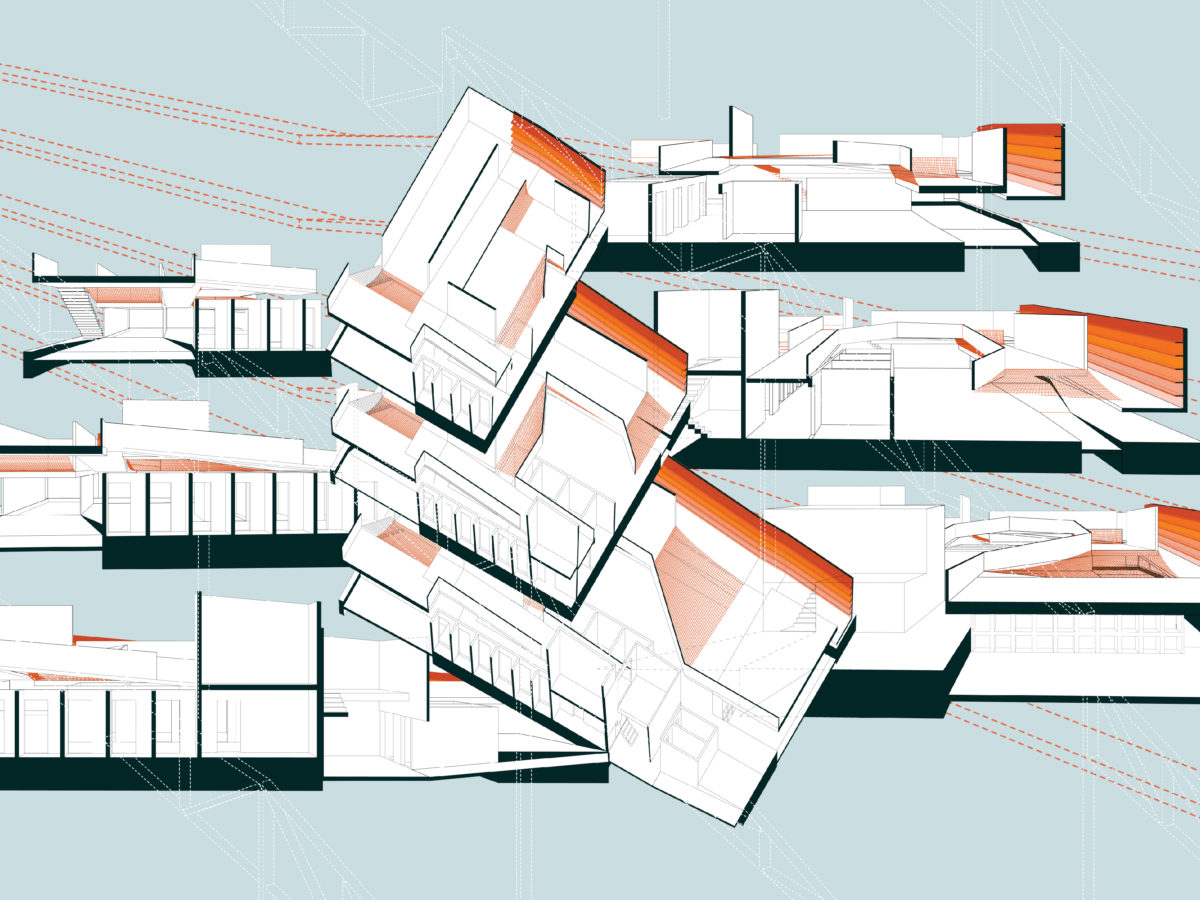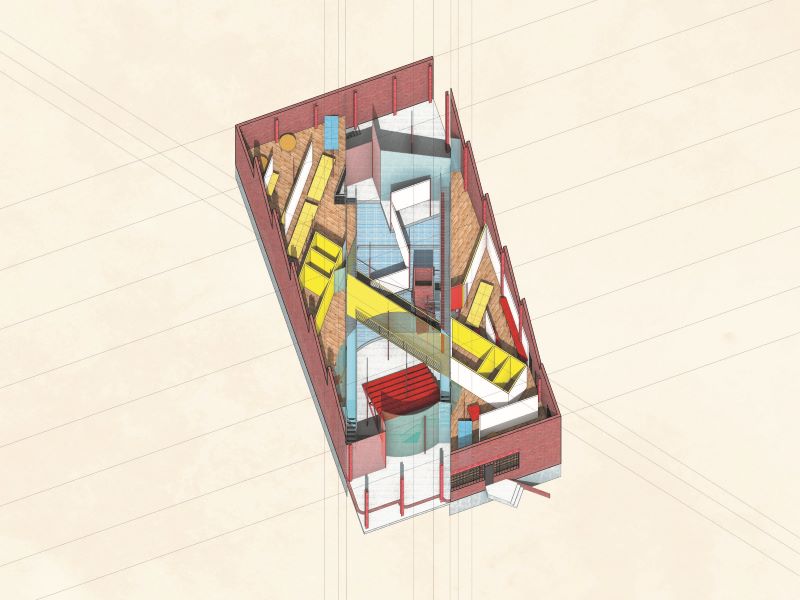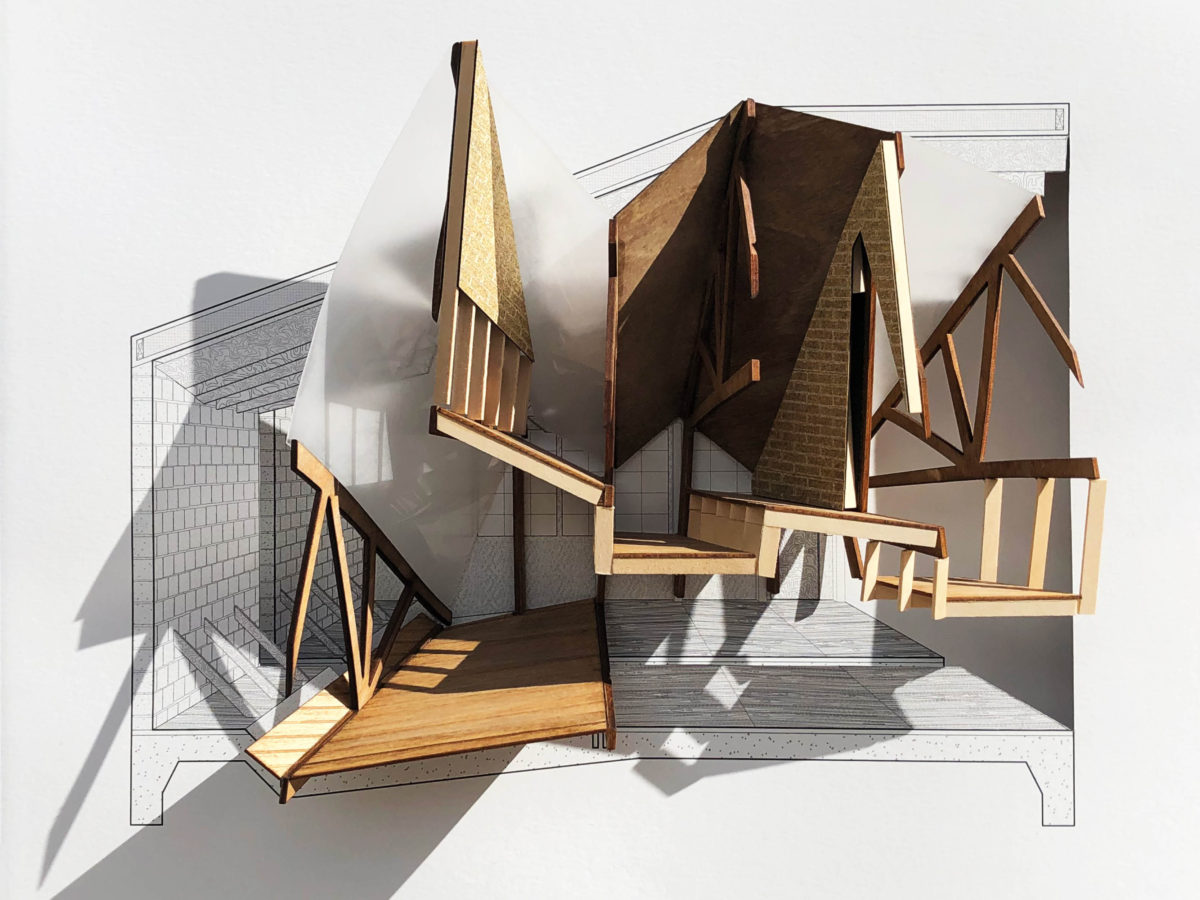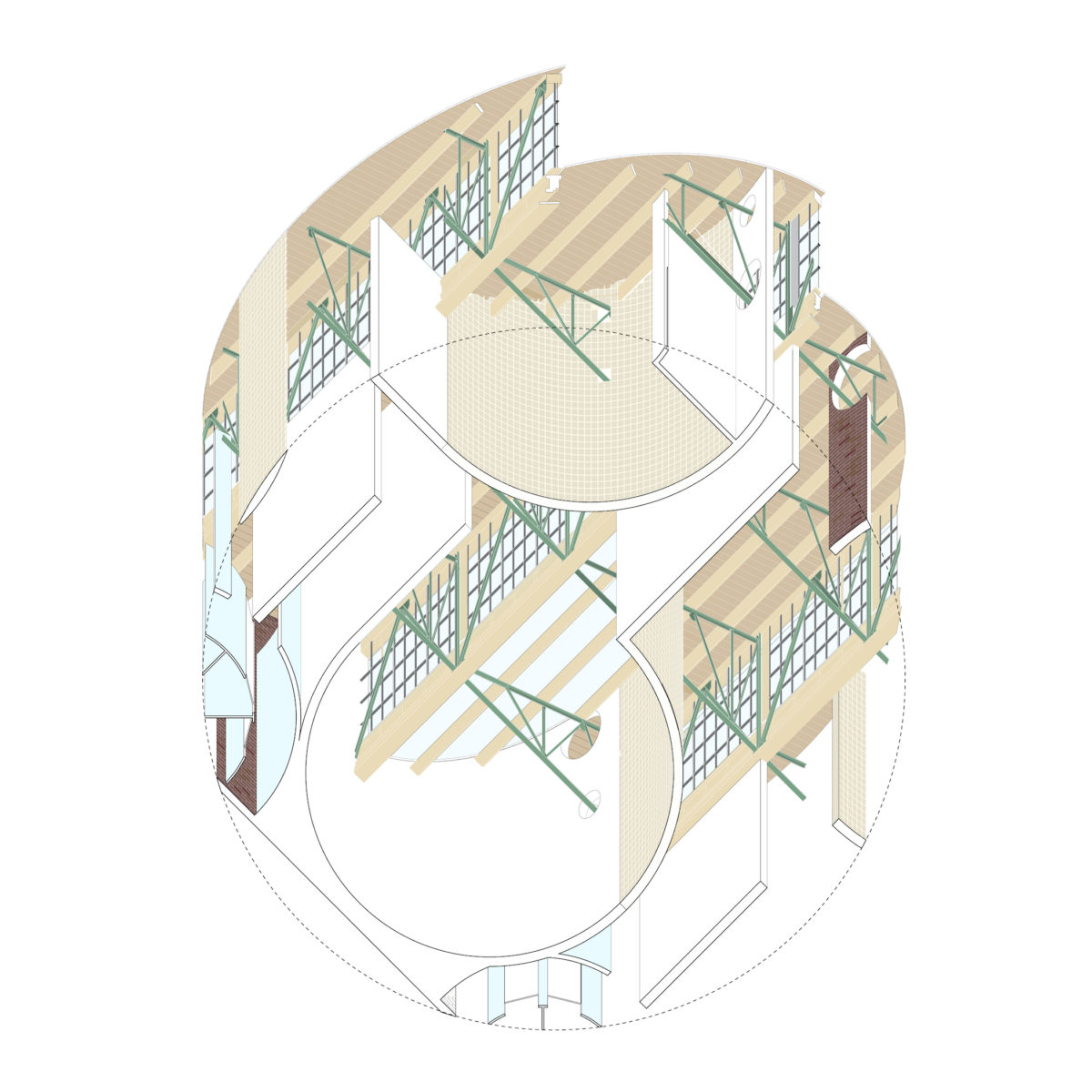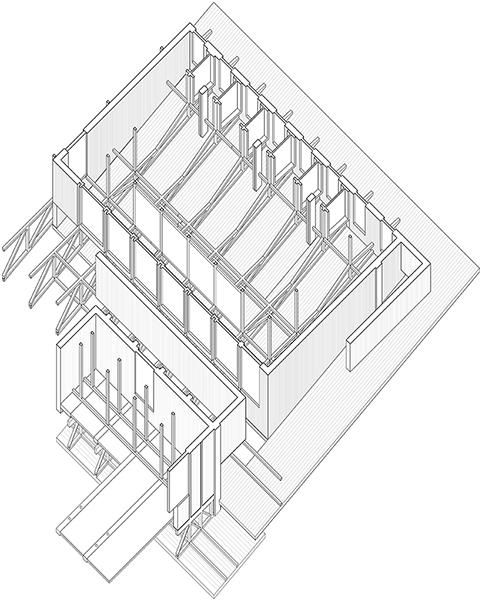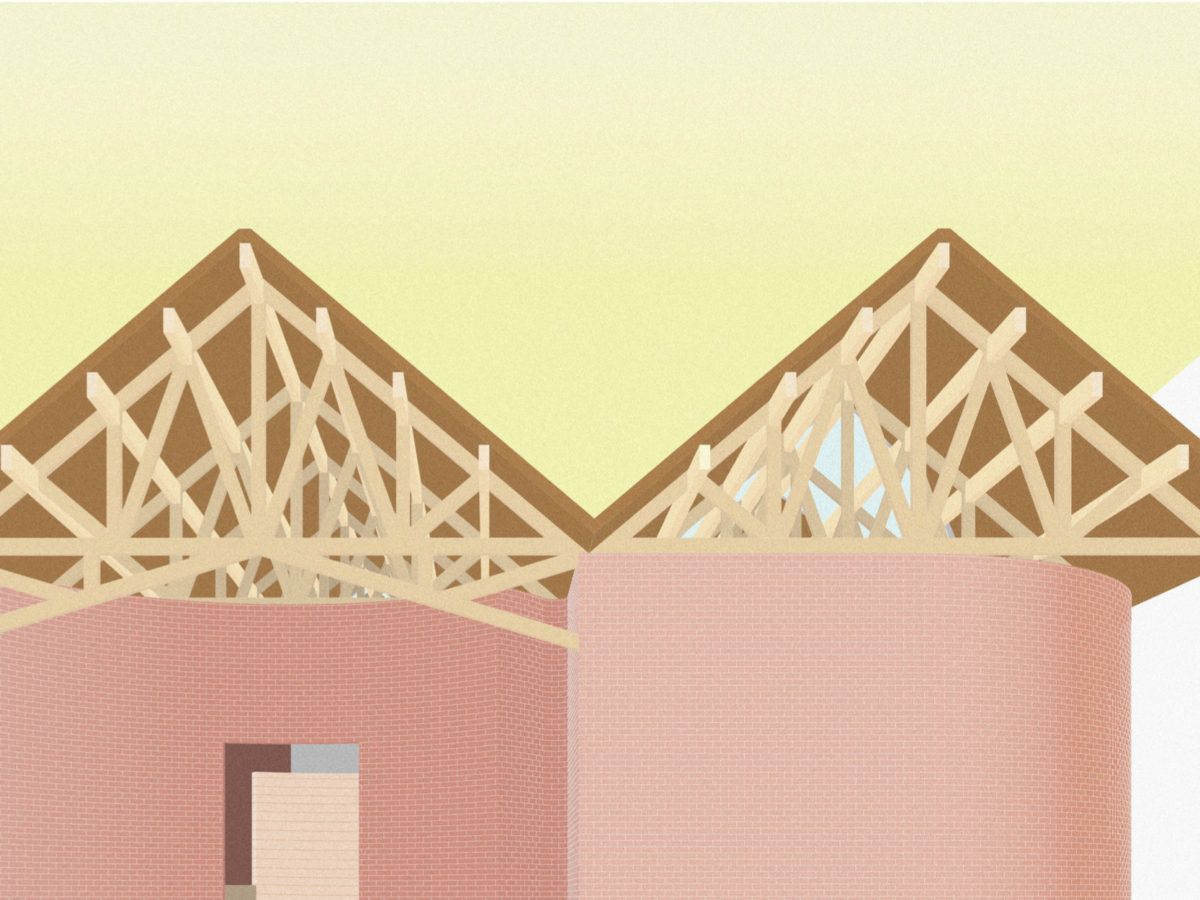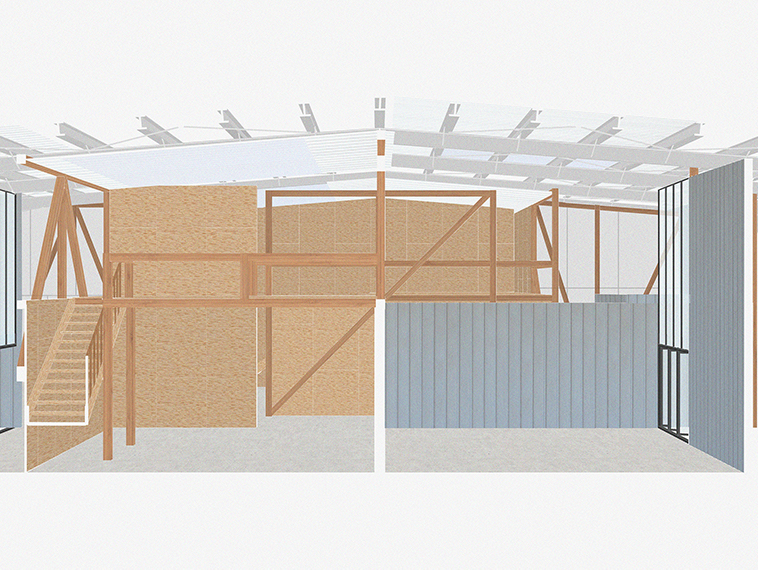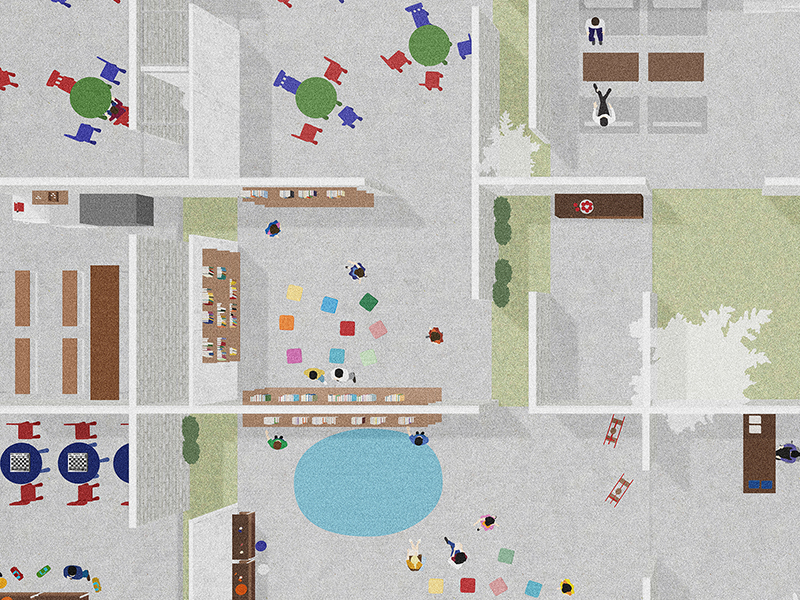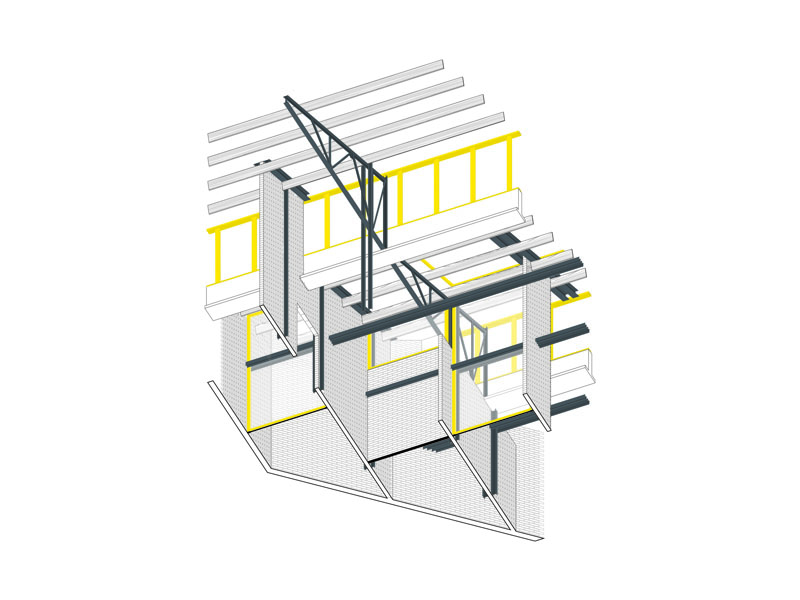Having had an initial interest in unconventional representations of a playspace, I decided to focus on the idea of a “ruin” as a precedent for Project two. My color-texture plan perspective, as well as my drawdel, shows the deepest delve into material explorations of concrete and glass masonry, which then led to my conclusion of the Reconstructed Kindergarten. The reconstructed Kindergarten aims to challenge the notion of a strictly partitioned educational program and instead allow for a child to be the determining factor when dictating a “play space” by utilizing texture and tactility to connect indoor, outdoor, and intermediate spaces. Although textural qualities are shared throughout the campus to blur the lines between play and education, programmatic differentiation within the classroom is supported by three progressing levels of porosity within the classrooms walls.


